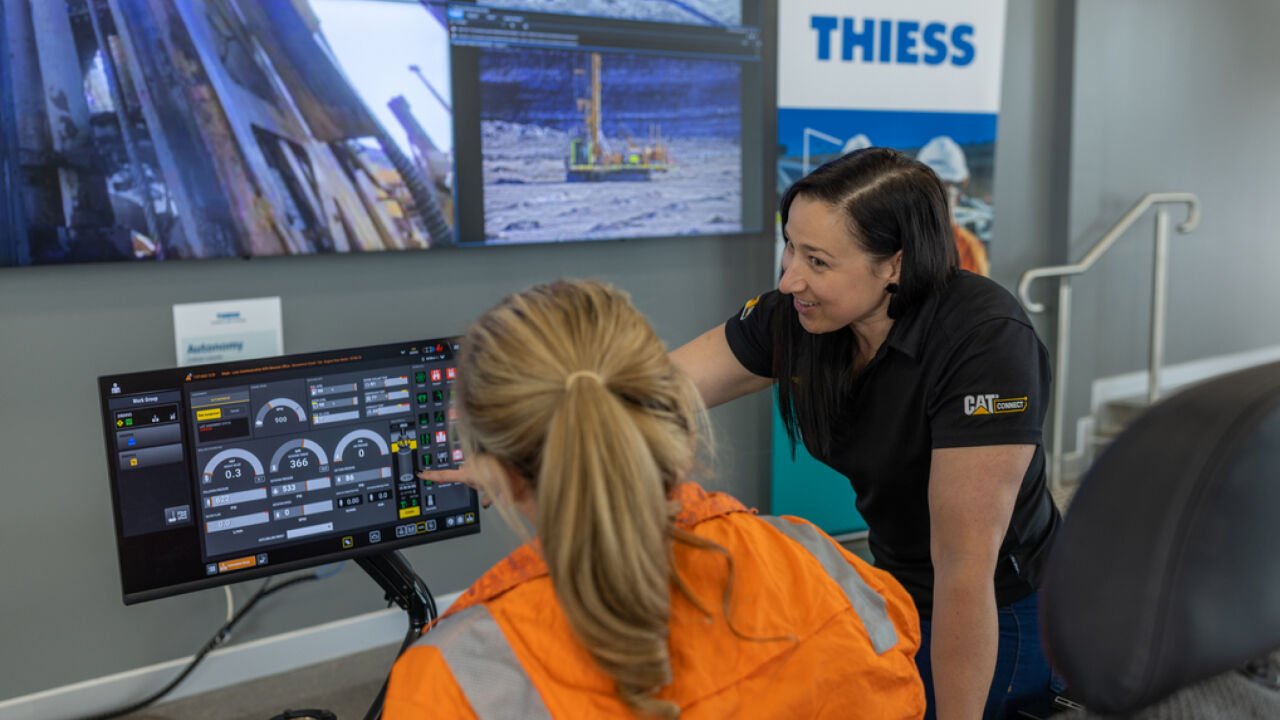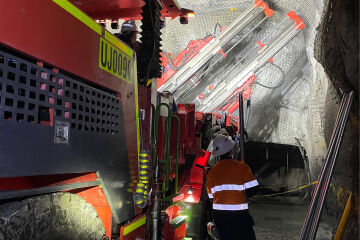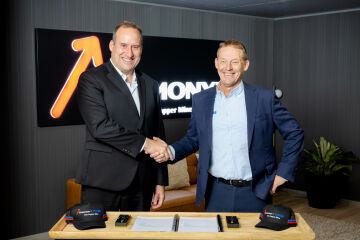minutos de lectura
Thiess collaboration delivers world-first autonomous drilling successes
Thiess has teamed up with WesTrac and Caterpillar® to implement a series of Caterpillar autonomous drilling world-firsts that drive safety and enable people, productivity and efficiency benefits.

Thiess collaborated with its partners, to operate two Caterpillar autonomous drill units safely and successfully at one of its New South Wales projects from an off-site remote operating centre (ROC) located at WesTrac’s Tomago-based headquarters.
It’s the first-time Caterpillar autonomous drilling has been piloted in a production environment using an off-site ROC, located more than 120 kilometres away.
Delivering firsts
Thiess Head of Asset Management & Autonomy, Matt Petty, said the achievement follows another impressive first – simultaneous operation of three Caterpillar autonomous drilling rigs (one multi-pass MD6250 and two single-pass MD6310s) from a single remote operating station (ROS).
“It’s also the first time that we’ve passed autonomous drills back and forth between an on-site remote operating station (ROS) and an off-site remote operating centre (ROC), on this occasion located at WesTrac’s Tomago headquarters,” Matt said.
“It’s an exciting achievement for our Thiess team and our collaboration with WesTrac and Caterpillar®, demonstrating what’s possible with this technology.”
Proven benefits
Site Manager Production John Hamson said autonomous drilling delivered compelling safety and people benefits, while also yielding productivity and efficiency opportunities.
“Autonomous operations enable us to remove people from a high exposure, active mining environment. It also gives us greater fatigue management opportunities enabling controllers to take coffee and toilet breaks, stand up and stretch their legs without interrupting operations,” John said.
“It’s delivered a material improvement in drill utilisation, by reducing unscheduled stoppages due to weather and allowing drilling closer to blasts.
“We’ve also seen a 20 per cent improvement in drilling performance, with daily utilisation of more than 20 hours per drill and improved accuracy with zero redrilled holes.
“And it provides career pathways for our people to develop and upskill to operate and maintain latest technology, equipping them for future mining.”
Collaboration journey
Thiess’ experience in autonomy began in 2012 when it played a major role in the conversion and implementation of autonomous haulage at an iron ore mine in Western Australia.
Today, its focus is the implementation of autonomous drills and dozers in addition to wider autonomous equipment feasibility.
Thiess has taken a collaborative approach to introducing autonomy at its projects, working closely with the original equipment manufacturers (OEMs) and dealers to identify and implement product improvement opportunities.
Thiess, WesTrac and Caterpillar have worked closely together to implement, test, enhance and evolve the autonomous drill systems and processes, even developing new software to provide autonomous drill controllers a three-dimensional view of strata across a drill pattern during multi-drill autonomous operations.
“We’ve been on our autonomous drilling journey since 2019, when we mobilised our first Caterpillar MD-series drill, equipped with Operator Mission Assist (OMA) technology, moving through to ‘single-row’, with the goal of full pattern, multi-pass autonomous drilling using multiple drills at a time with one controller,” Matt explained.
“Our close collaboration and a controlled, phased rollout of the technology with operational insight has meant piloting, implementation and refinement of the technology has been safe, efficient and successful.
“We’re now looking to expand our application of autonomous drill technology, ultimately graduating to off-site remote operating centres, from which controllers can operate multiple drills across multiple projects.”



